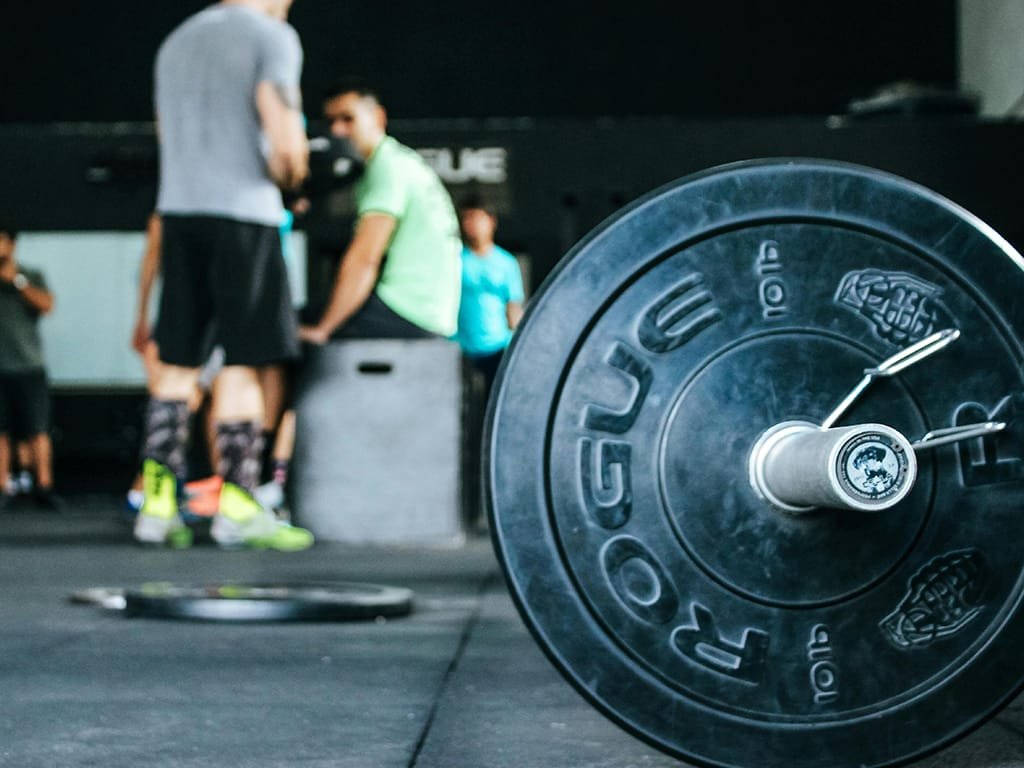The Best Fluffy Pancakes recipe you will fall in love with. Full of tips and tricks to help you make the best pancakes.
Why Does Weight Exercise Training Improve Muscular Strength Train More Than Cardiorespiratory Disease Fitness?
Have you ever wondered why weight exercise training seems to deliver such powerful results for building muscular strength compared to cardio-focused routines? While both forms of exercise have undeniable health benefits, the impact they have on your muscles and overall fitness differs significantly. Strength training, in particular, has a unique ability to directly target and enhance muscular endurance, power, and size in ways that cardio simply can’t replicate.
Table of Contents
ToggleIn this blog, we’ll explore the science behind why weight training is more effective for developing muscular strength than cardiorespiratory fitness routines. From understanding how muscles adapt to resistance to the long-term benefits of incorporating strength exercises into your regimen, we’ll uncover the key factors that make weight training a game-changer. Whether you’re new to the gym or looking to refine your fitness approach, this guide will help you make informed choices for a stronger, healthier you. Ready to lift your understanding of fitness? Let’s dive in!

Key Takeaways
- ‘Weight training’ mainly boosts ‘muscular strength’ through resistance exercises.
- Cardiorespiratory fitness, on the other hand, focuses on endurance and aerobic capacity.
- Resistance training effectively recruits muscle fibers, leading to greater strength gains.
- Understanding the differences between training methods can optimize your workout routine.
- Integrating both ‘weight training’ and cardio can provide a balanced fitness regimen.
the Basics of Weight Endurance Training
‘Weight training’ is about using resistance to build muscle strength. It involves doing exercises against an outside force. This can be with free weights, machines, or even your own body weight.
Progressive overload is a key part of ‘weight training’. It means slowly increasing the weight or resistance you lift. This helps your muscles get stronger over time.
Knowing terms like sets, reps, and rest intervals is important. A set is a series of reps done one after another. A rep is one full movement. Resting between sets lets your muscles recover, which helps you get stronger.
Here’s a table to help you understand these basics:
| Term | Description |
|---|---|
| Set | A collection of repetitions performed consecutively. |
| Rep | The action of lifting and lowering resistance once. |
| Rest Interval | The time taken to recover between sets. |
Learning these basics helps you understand ‘weight training’ better. It sets the stage for improving your muscle strength.
The Science Behind Muscular Effect of Strength
The science of ‘muscular strength’ involves many physiological processes. When you do strength training, your muscles face stress. This stress leads to amazing changes in your muscles.
One key change is hypertrophy. This means your muscle fibers get bigger. It happens because of satellite cells that help your muscles grow after hard workouts. This cycle of stress and rest makes your muscles stronger and more resilient.
Neuromuscular adaptations are also important. As you train, your brain gets better at talking to your muscles. This makes your movements more efficient and your strength greater. This better communication is key for building strength.
Hormones like testosterone and growth hormone also play a big role. Strength training makes your body release these hormones. They help your muscles grow by making proteins.
Knowing about these biological processes can help you get stronger. By focusing on hypertrophy and neuromuscular adaptations, you can make your workouts more effective. This will help you see real gains in strength.
| Aspect | Description |
|---|---|
| Hypertrophy | Increase in muscle fiber size due to resistance training. |
| Neuromuscular Adaptation | Enhanced communication between the brain and muscles for improved strength. |
| Hormonal Influence | Release of testosterone and growth hormone promotes muscle growth. |
What is Cardiorespiratory Fitness?
Cardiorespiratory fitness is how well your body gets oxygen to muscles when you’re active for a long time. It’s key for your endurance and stamina. It’s about how well your heart, lungs, and muscles work together, mainly during aerobic exercises training.
Doing endurance training boosts this fitness by helping your body use more oxygen. This is important for activities that last a long time.
Regular aerobic activities like running, cycling, and swimming boost cardiorespiratory fitness. These exercises make your heart and lungs work better. Better cardiorespiratory fitness means lower risks of heart disease, diabetes, and high blood pressure.
VO2 max is a way to measure cardiorespiratory fitness. It shows how much oxygen your body can use during hard exercise. A higher VO2 max means better aerobic fitness and endurance.
This is very important for older adults. Good cardiorespiratory fitness can help them live better and stay independent as they get older.
In short, knowing about cardiorespiratory fitness is important for better health and performance. Adding aerobic fitness and endurance training to your routine can greatly improve your well-being.
Key Differences Between Resistance Training and Cardio
Knowing the differences between resistance training and cardio is key to your fitness journey. Resistance training boosts ‘muscular strength’. It works specific muscles against resistance, growing them and making them stronger. On the other hand, cardio improves your heart and lung health by raising your heart rate and boosting endurance.
It’s important to understand the energy systems used. Resistance training uses the anaerobic system for quick, intense efforts. This builds muscle. Cardio, though, uses the aerobic system for longer, steady efforts. This improves your stamina and endurance.
Below is a table highlighting further differences:
| Aspect | Resistance Training | Cardio |
|---|---|---|
| Focus | Muscular Strength | Cardiorespiratory Fitness |
| Energy System | Anaerobic | Aerobic |
| Duration | Short bursts (30-90 seconds) | Continuous (20-60 minutes) |
| Muscle Targeting | Specific muscle groups | Full body engagement |
| Main Benefits | Increased ‘muscular strength’ and size | Enhanced heart health and endurance |
How Weight Training Enhances Muscle Fiber Recruitment
‘Weight training’ is key to muscle fiber recruitment, which boosts your strength. High-intensity exercises in ‘weight training’ activate more muscle fibers than cardio. Knowing how motor units work is key to getting the most out of this.
Motor units are made of a motor neuron and the muscle fibers it controls. When you do weight training, your body uses more motor units to lift heavy weights. This means more muscle fibers get activated, making you stronger.
Resistance training targets different muscle fibers. You have slow-twitch fibers for endurance and fast-twitch fibers for high exercise intensity efforts. ‘Weight training’ focuses on fast-twitch fibers, helping you grow stronger faster than cardio.
The table below shows how ‘weight training’ and cardio differ in muscle fiber recruitment:
| Type of Exercise | Muscle Fiber Recruitment | Focus on Fiber Type |
|---|---|---|
| Weight Training | High | Fast-Twitch Fibers |
| Cardio | Low to Moderate | Slow-Twitch Fibers |
To get the most from muscle fiber recruitment, add structured weight training to your routine. This will help you increase strength and fitness.

Benefits of Resistance Exercise Training over Cardio
Resistance training offers many benefits that go beyond cardio workouts. It boosts muscle strength, which helps you with physical activity and sports in daily life. This also lowers the chance of getting hurt.
It also helps your metabolism. When you build muscle through resistance training, your body burns more calories even when you’re not moving. This can lead to more fat loss than cardio, making it great for weight management.
Another key benefit is improved bone density. Strong muscles help bones grow stronger. This is very important for older adults, as it can prevent fractures and osteoporosis.
Lastly, resistance training makes everyday tasks easier. It increases muscle strength, helping you tackle daily physical fitness challenges. This makes your life more active and independent.
- Increased muscle strength
- Improved metabolism and calorie burning
- Enhanced bone density
- Greater functional abilities
The Role of Muscle Hypertrophy in Strength Gains
Muscle hypertrophy is key to getting stronger through resistance training. It means your muscles get bigger because of the training. This growth comes from two main things: mechanical tension and metabolic stress. Knowing how these work can help you train better.
Mechanical tension happens when you lift weights, causing tiny tears in your muscles. These tears call in satellite cells to fix and grow the muscles. Metabolic stress, on the other hand, comes from exercises that build up metabolites like lactate. This stress triggers hormones that help your muscles grow, making you stronger.
To get the most out of muscle hypertrophy and strength, try these:
- Do compound exercises like squats and deadlifts that work many muscles.
- Keep adding more weight or resistance to your lifts.
- Control how fast you move during exercises to make your muscles work harder.
- Choose 6-12 reps for each set to build muscle size and strength.
- Make sure to rest well and eat right to help your muscles recover and grow.
People who lift weights often see their muscles get bigger and stronger. Bigger muscles mean you can lift more and do better in sports and daily activities.
| Factor | Impact on Muscle Hypertrophy | Impact on Strength Gains |
|---|---|---|
| Mechanical Tension | Stimulates muscle fiber repair and growth | Enhances force production capabilities |
| Metabolic Stress | Promotes hormonal responses conducive to growth | Improves endurance and performance in strength tasks |
| Progressive Overload | Safeguards continual adaptation of muscles | Supports steady increases in weight lifted |
By following these key principles in your workouts, you can boost muscle hypertrophy and strength. Focus on careful training and recovery to unlock your full muscle strength and power.
Muscular Strength vs. Cardiorespiratory Fitness
It’s important to know the difference between ‘muscular strength’ and ‘cardiorespiratory fitness’. These two parts of fitness do different things for our health and well-being.
Defining ‘Muscular Strength’
‘Muscular strength’ is how much force a muscle can use. It helps us do daily tasks, get better at sports, and look good. Weight training helps build this strength by working on specific muscles.
Doing resistance exercises regularly can really increase your strength. This is because it makes your muscles grow and work better.
Importance of Cardiorespiratory Fitness
‘Cardiorespiratory fitness’ is about how well your heart, lungs, and muscles work together. It’s key for keeping your heart healthy and preventing diseases like heart disease and diabetes. It also helps you last longer during workouts and daily activities.
Combining strength training and cardio exercises is the best way to stay fit. It helps you get the most health benefits.
| Component | Definition | Benefits |
|---|---|---|
| ‘Muscular Strength’ | The maximal force exerted by a muscle or muscle group. | Enhances performance, improves body composition, and aids in daily tasks. |
| Cardiorespiratory Fitness | Efficiency of the heart, lungs, and muscles in working together. | Boosts endurance, maintains cardiovascular disease health and reduces disease risk. |
Training Programs for Improving Muscular Strength
Creating effective training programs is key to boosting ‘muscular strength’. Resistance training is a mainstay for building a strong foundation. Understanding principles like progressive overload, specificity, and frequency is important.
Progressive overload means slowly increasing the weight or resistance to challenge your muscles. This is essential to avoid plateaus and keep making strength gains. Specificity means your workouts should target the muscles you want to strengthen. For example, exercises for your chest, back, and legs help build balanced strength.
When planning your workouts, think about how often you should train. Most experts say to train muscle groups two to three times a week. This balance allows for recovery while keeping the muscles challenged. Here’s a sample training program to show how these principles work:
| Day | Exercise | Sets | Repetitions |
|---|---|---|---|
| Monday | Bench Press | 4 | 6-8 |
| Wednesday | Deadlift | 4 | 6-8 |
| Friday | Squats | 4 | 6-8 |
This program focuses on big lifts that work many muscles at once. It’s great for boosting strength. You can use free weights or machines, depending on what you like and what you have access to.
Creating a training plan that fits your goals is the best way to succeed. Keep track of your progress, make changes as needed, and you’ll see your strength training improve muscle.
Incorporating Cardio into Your Strength Training Routine
Adding cardio to your strength training can make you fitter and better at sports. It’s key to mix it right so it helps your workouts and keeps your heart healthy.
Think about how hard and long your strength training is. Light to medium cardio is good on rest days. It lets your muscles recover. But, intense workouts need more time to get back to normal. So, plan your cardio and strength training carefully to get the most benefits.
Finding the right mix of cardio is important. You need to look at different types:
| Cardio Type | Duration | Benefits |
|---|---|---|
| Steady-State Cardio | 30-60 minutes | Improves endurance, easy to incorporate on strength training days |
| High-Intensity Interval Training (HIIT) | 15-30 minutes | Boosts metabolism, enhances aerobic and anaerobic capacity |
| Active Recovery | 20-40 minutes | Promotes recovery, reduces soreness, maintains mobility |
By mixing cardio into your routine, you get a full fitness plan. It boosts your muscle strength and heart health. Trying different cardio types makes your workouts more fun and varied.

Conclusion
‘Weight training‘ is a top choice for boosting ‘muscular strength’. It’s better than cardio for this purpose. We’ve seen how it helps muscles grow and get stronger.
By doing specific exercises and pushing your muscles harder, you can see big improvements. This makes your fitness level go up.
But, it’s also important to mix in cardio with your ‘weight training’. Cardio helps keep your heart healthy and boosts endurance. A balanced routine of both exercises leads to better strength and overall health.
Knowing the benefits of ‘weight training’ and keeping your heart fit is key. This approach helps you reach your fitness goals better. It lets you enjoy a healthier life by combining strength training with heart health.
FAQ
Why does ‘weight training’ improve muscular strength more than ‘cardiorespiratory fitness’?
Focuses on resistance exercises to boost muscle strength. It’s different from cardio, which aims for endurance. ‘Weight training’ helps muscles grow and adapt, leading to better strength.
What should I understand about ‘weight training’ before starting?
is about working against resistance to build muscle. It uses free weights, machines, or bodyweight. Knowing about sets, reps, and rest is key to getting stronger.
What is the science behind ‘muscular strength’?
‘Muscular strength’ comes from training. It makes muscles bigger and improves how the brain and muscles work together. This boosts overall strength.
How is ‘cardiorespiratory fitness’ defined?
It’s how well your heart, lungs, and muscles work together during exercise. It keeps you healthy by improving endurance and heart health. VO2 max is a key measure, important for older adults.
What are the key differences between effect of resistance training and cardio?
Resistance training on muscle strength and growth. Cardio focuses on heart health and endurance. Resistance uses anaerobic energy, while cardio uses aerobic training.
How does ‘weight training’ enhance muscle fiber recruitment?
Body Weight training uses high-intensity exercises to activate more muscle fibers. This is better than cardio. It’s about recruiting more fibers to get stronger.
What are the benefits of the resistance effect of exercise program training over cardio?
Resistance training boosts muscle strength, metabolism, and bone density. It improves functional abilities and can lead to more fat loss. It’s also safer for older adults.
How important is muscle hypertrophy for strength gains?
Muscle hypertrophy is key for strength gains. It comes from resistance strength training session, which increases muscle size. This is essential for getting stronger.
How do ‘muscular strength’ and cardiorespiratory fitness differ?
‘Muscular strength’ is about the maximum force a muscle can exert. ‘Cardiorespiratory fitness’ is about how well the heart and lungs work during exercise. Both are important for fitness and health.
What training programs are effective for improving ‘muscular strength’?
Good programs use progressive overload and specificity. They include free weights and machines. A tailored schedule helps meet strength goals.
How can I incorporate cardio into my strength training routine?
Mix endurance and resistance workouts for a balanced routine. Choose steady-state cardio or HIIT. Remember to recover well to perform well in both.



